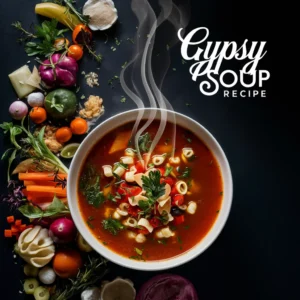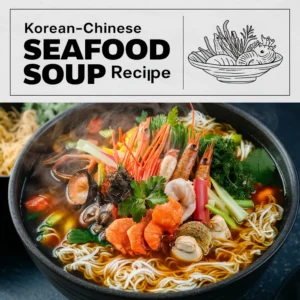Pak choi, also known as bok choy, is one of the easiest and most flexible vegetables to work with in the kitchen. Whether you’re tossing it into a sizzling stir-fry or slicing it raw for a crisp salad, this leafy green adapts effortlessly. Its mild flavor and fresh crunch make it a great addition to a wide variety of meals, from a simple bowl of white rice to a comforting soup or ramen.
One of the best things about pak choi is how quickly it cooks. A simple stir-fry with sliced garlic and a touch of oil is all it takes to bring out its best. Starting with the firm stems keeps that satisfying crunch, while adding the leafy greens right at the end ensures everything stays tender but never soggy. It’s the perfect choice when you need something light, fast, and flavorful.
Pak choi is a natural match for whatever protein you’re craving. Its subtle taste pairs beautifully with everything from pan-fried tofu to grilled fish or marinated meats. No matter the main dish, pak choi slides into the mix seamlessly, rounding out the meal without overpowering the plate.
On days when you want something filling with minimal effort, pak choi is your go-to. Mix it into stir-fried noodles or spoon it over fluffy white rice for a quick and satisfying bowl. It also soaks up broths like a dream, making it perfect for ramen and soups. With its flavor, texture, and dependability, pak choi has earned its spot as a kitchen staple.
Pak Choi vs Bok Choy
What’s the difference?
Many people ask, “Is pak choi the same as bok choy?”
Yes, they are mostly the same vegetable. They both come from the same plant family (Brassica rapa), which is part of the cabbage family. But there are small differences you might notice depending on the variety and region.
Here’s a simple table to help:
| Feature | Pak choi | Bok Choy |
| Name origin | British English (UK, UAE) | American English (US/Canada) |
| Leaf color | Dark green | Light green or white |
| Stem color | Pale green | Bright white |
| Size | Smaller, tender | Bigger, sometimes crunchier |
| Taste | Mild, slightly sweet | Mild, sometimes earthy |
In the UAE, you’ll find both types labeled interchangeably at grocery stores.
Types of Pak Choi
Pak choi comes in different types. Some of the most common ones are:
- Baby pak choi: Smaller, tender leaves. Perfect for stir-fry.
- Shanghai bok choy: Light green stem and leaves. Juicier texture.
- Taiwan bok choy: Slightly larger leaves with a bold crunch.
Fun fact
In Cantonese, “bok choy” means “white vegetable.” But don’t be fooled- it’s not always white!
How to Cook Pak Choi
Cooking pak choi is easy and fast. It takes under 10 minutes to make it taste great. You don’t need special tools or lots of time.
Basic Cooking Methods
Here are 5 simple ways to cook it:
- Stir-fry (best for fast meals)
- Steam (great for meal prep)
- Boil or blanch (for soups or noodles)
- Grill or roast (for bold flavor)
- Eat raw (perfect for salads)
Step-by-step: How to Stir-Fry Pak Choi
Ingredients:
- 1 bunch of pak choi
- 1 tbsp oil
- 2 cloves garlic, sliced
- Salt to taste
Steps:
- Wash the pak choi well.
- Cut off the root. Separate stems and leaves.
- Heat oil in a pan. Add garlic and let it sizzle.
- Add stems first. Cook for 2-3 minutes.
- Add the leaves. Stir for 30 seconds.
- Add salt. Serve hot.
Cooking Tip
Always cook stems first. They are thicker and need more time than the leafy parts.
Make This Easy Garlic Pak Choi Recipe
This recipe is perfect if you want something quick, healthy, and tasty.
“This is my go-to veggie side when I make grilled chicken or salmon.” – Nour, a home cook in Abu Dhabi.
Easy Garlic Pak Choi
Prep time: 5 mins
Cook time: 5 mins
Serves: 2
Ingredients
- 2 baby pak choi
- 1 tbsp sesame oil (or olive oil)
- 3 garlic cloves, sliced
- 1 tbsp soy sauce
- Pinch of salt
Instructions
- Wash and cut the pak choi.
- Heat the oil in a pan.
- Add garlic and stir until golden.
- Add pak choi stems. Stir 2-3 minutes.
- Add leaves and soy sauce.
- Cook another 1-2 minutes.
- Serve warm.
Optional Add-ons
- Chili flakes for spice
- Toasted sesame seeds for crunch
- Oyster sauce for depth
What to Serve With Pak Choi?
Pak Choi is mild. So, it goes well with strong flavors. It complements salty, spicy, sweet, or sour dishes.
Here are popular UAE-friendly pairings:
| Dish | Why It Works |
| Grilled salmon | Pak Choi balances oily fish well |
| Soy-glazed chicken | Sweet and salty meet fresh and mild |
| Garlic noodles | Adds freshness to a rich noodle base |
| Beef stir-fry | Adds crunch and light flavor |
| Jasmine rice | Simple and filling |
Recipe Pairings Featuring Pak Choi
These dishes are perfect mains for pak choi sides:
Ginger Soy Salmon
- Quick oven bake
- Serve with steamed pak choi and rice.
Braised Pork Belly
- Rich and fatty
- Pak Choi cuts the heaviness.
Steamed Spare Ribs
- A dim sum classic
- Add pak choi underneath in the steamer.
Chinese Chicken
- Use five-spice or soy marinade.
- Stir-fry pak choi on the side
Katsu Chicken Curry
- Japanese flavor with a twist
- Add pak choi on the plate for green balance.
Char Siu Pork
- Sweet, roasted pork
- Serve with blanched pak choi and rice
Alternatives to Pak Choi
Can’t find pak choi? No worries. Try these easy-to-find substitutes in the UAE:
| Alternative | Flavor | How to Use |
| Chinese Broccoli | Bitter, crunchy | Stir-fry, steam |
| Napa Cabbage | Mild, soft | Soups, stir-fries |
| Choy Sum | Slightly sweet | Good for garlic stir-fry |
| Swiss Chard | Earthy, strong | Add to soups or grill |
| Spinach | Soft, tender | Use in soups, curries, or salads |
Case Study: UAE Cooking Blogger – Aisha from Sharjah
“I started using pak choi because I wanted more greens for my family. It’s easy to find, and even my kids love it! I pair it with soy chicken and jasmine rice- so simple and fast.” – Aisha’s Kitchen Blog.
Final Tips
- Buy fresh: Look for firm stems and deep green leaves.
- Store smart: Keep in the fridge, use within 3-4 days.
- Wash well: Dirt hides in the stem base.
- Use both parts: Stems = crunch, Leaves = soft bite.
Final Thoughts
Pak choi, also called bok choy, is more than just a green vegetable. It’s easy to cook, quick to prepare, and delicious in any dish. From stir-fries to soups, rice bowls to salads, it fits right into every kitchen-even the busiest ones in the UAE. Whether you’re a beginner or a pro, this veggie helps you make healthy meals fast.
What makes pak choi so special is its mild flavor, crunchy stems, and soft leaves. It’s also packed with vitamins, fiber, and antioxidants, making it a smart choice for anyone who wants to eat better without spending hours in the kitchen.
You don’t need fancy ingredients or tools to enjoy it. A little oil, some garlic, and a hot pan are all you need to bring out its natural goodness. And when paired with protein-rich dishes like grilled fish, chicken, or tofu, it turns into a balanced, satisfying meal.
In the UAE, you can find pak choi in many local grocery stores. It’s affordable, reliable, and perfect for quick meals during busy weekdays or weekend family dinners.
If you ever run out, don’t stress. There are great substitutes like Chinese broccoli, spinach, or choy sum that work well in most recipes.
So next time you’re shopping for veggies, grab a bunch of pak choi. Try it in different ways- raw, steamed, stir-fried, or grilled. It’s one green you’ll want to keep in your kitchen again and again.
FAQs
What is the difference between pak choi and bok choy?
They are the same plant. The name “pak choi” is used in the UK and UAE, while “bok choy” is more common in the US. Some types have white stems, others green. But they cook and taste the same.
Can I eat pak choi raw?
Yes! You can eat pak choi raw in salads or slaws. Just wash it well, slice it thin, and toss it with your favorite dressing. It adds a fresh crunch to your meal.
How do I store pak choi?
Wrap it in paper towels and place it in a plastic bag in the fridge. It stays fresh for 3-4 days. Don’t wash it before storing, as moisture can make it spoil faster.
Is pak choi good for health?
Yes, it’s rich in vitamin C, A, and K, plus fiber and antioxidants. It’s low in calories and great for digestion. It’s a good choice if you want a healthy, light vegetable.
What dishes go best with pak choi?
Pak choi goes well with rice, noodles, tofu, fish, chicken, and even beef. Try it in stir-fries, ramen, soups, or steamed on the side of grilled meat or curry dishes.




